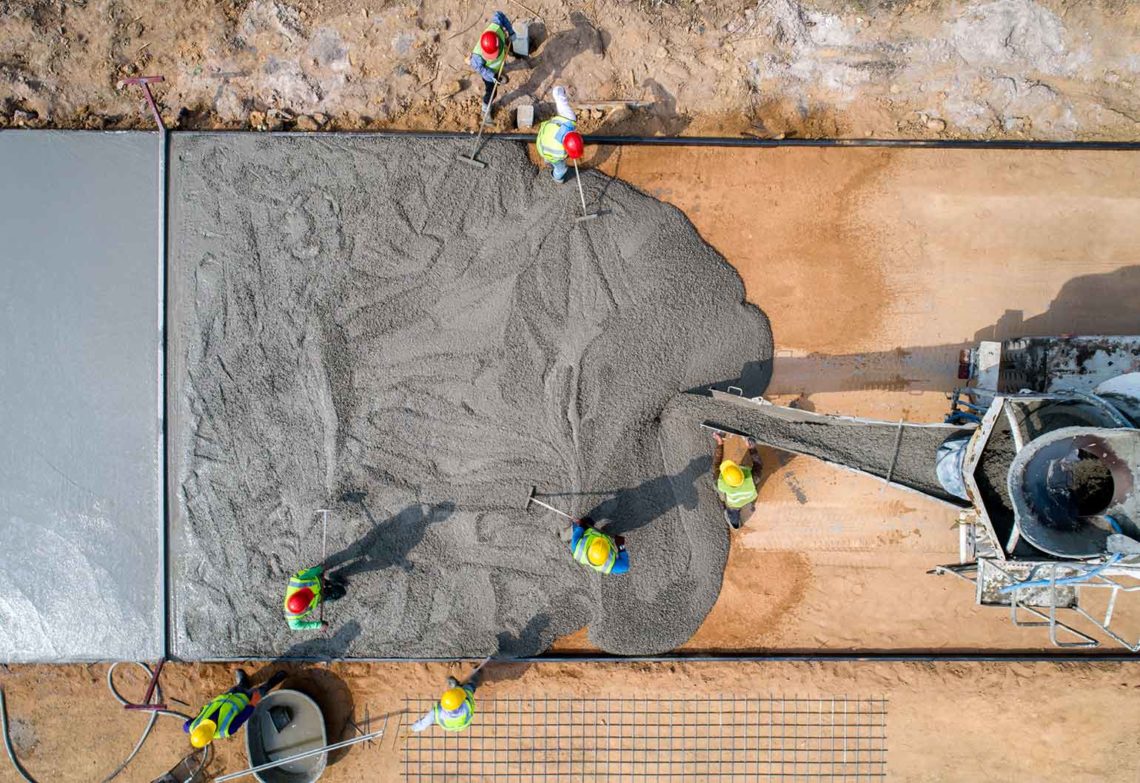The Innovations Of Civil Engineering In Sustainable Concrete

Innovations of Civil Engineering
Civil engineering is a field dedicated to designing, constructing and maintaining public works such as bridges, roads, airports and water supply systems. The world of civil engineering is constantly evolving, with new innovations being developed all the time. Here are some examples of recent innovations in civil engineering:
1. 3D Printing
3D printing involves creating three-dimensional objects from a digital file. In civil engineering, 3D printing is being used to create complex and intricate designs that would be difficult or impossible to create using traditional methods. For example, 3D printing is being used to create concrete structures that have intricate shapes and designs.
2. Self-Healing Concrete
Self-healing concrete is a type of concrete that is designed to repair its own cracks. This type of concrete contains bacteria that can produce calcite, which fills the cracks and makes them less noticeable. Self-healing concrete has the potential to save money and reduce maintenance needs in the long run.
3. Smart Roads
Smart roads use technology to improve safety and efficiency on highways. For example, smart roads can use sensors and cameras to detect traffic and provide real-time updates to drivers. Smart roads can also include features such as self-heating surfaces to prevent ice buildup and solar panels to generate electricity.
4. Wind Turbines in Bridges
Some civil engineers are incorporating wind turbines into bridge designs. These wind turbines can generate electricity to power streetlights, nearby buildings, or even the bridge itself. The combination of energy-efficient design and renewable energy generation makes this innovation an exciting development for civil engineering.
5. Transparent Aluminum
Transparent aluminum is a material that is stronger and more durable than traditional glass. This material is being used in civil engineering to create windows and panels that are resistant to impacts, weather, and other types of damage.
Frequently Asked Questions
What is Civil Engineering?
Civil engineering is a field dedicated to designing, constructing and maintaining public works such as bridges, roads, airports and water supply systems. Civil engineers use mathematics, physics, and other scientific principles to design and build structures that are safe, efficient, and cost-effective.
What are the Benefits of Self-Healing Concrete?
Self-healing concrete can reduce the need for maintenance and repairs, which can save money over time. This type of concrete can also increase the lifespan of structures and reduce the environmental impact of construction and maintenance activities.
What are Smart Roads?
Smart roads use technology to improve safety and efficiency on highways. Smart roads can include features such as sensors, cameras, and solar panels that generate electricity. Smart roads can also provide real-time traffic updates and other information to drivers, which can improve safety and reduce travel times.
What are the Advantages of Incorporating Wind Turbines into Bridges?
Incorporating wind turbines into bridges can generate renewable energy and reduce the environmental impact of infrastructure projects. This type of innovation can also improve the sustainability, efficiency, and safety of bridges, which are critical infrastructure components in many communities.
What are the Benefits of Transparent Aluminum?
Transparent aluminum is a stronger and more durable material than traditional glass. This material can increase the safety, security, and longevity of structures such as windows, panels, and screens. Transparent aluminum can also reduce the environmental impact of construction, as it is more resistant to damage and may need to be replaced less frequently than other materials.
What is 3D Printing?
3D printing involves creating three-dimensional objects from a digital file. This technique can be used to create complex and intricate designs that would be difficult or impossible to create using traditional methods. 3D printing is being increasingly used in civil engineering to create structures such as bridges, buildings, and roads.
How is Self-Healing Concrete Made?
Self-healing concrete contains bacteria that produce calcite, which fills in cracks and repairs the concrete. The bacteria are activated when they come into contact with moisture, such as rainwater or humidity. This process can extend the lifespan of structures and reduce the need for repairs and maintenance over time.
How Do Smart Roads Improve Safety?
Smart roads can improve safety by providing real-time traffic updates and other important information to drivers. Smart roads can also include features such as self-heating surfaces, which can prevent ice buildup and reduce the risk of accidents. By improving safety on highways, smart roads can help reduce the number of accidents and fatalities on the road.
What are the Applications of 3D Printing in Civil Engineering?
3D printing is being increasingly used in civil engineering to create complex and intricate designs that would be difficult or impossible to create using traditional methods. 3D printing can be used to create structures such as bridges, buildings, and roads. 3D printing can also be used to create custom fittings and parts that are tailored to specific projects or sites.
These are just a few examples of the exciting innovations that are revolutionizing the field of civil engineering. By incorporating new technologies and materials into their designs, civil engineers are creating structures that are safer, more sustainable, and more efficient than ever before.


Post a Comment for "The Innovations Of Civil Engineering In Sustainable Concrete"